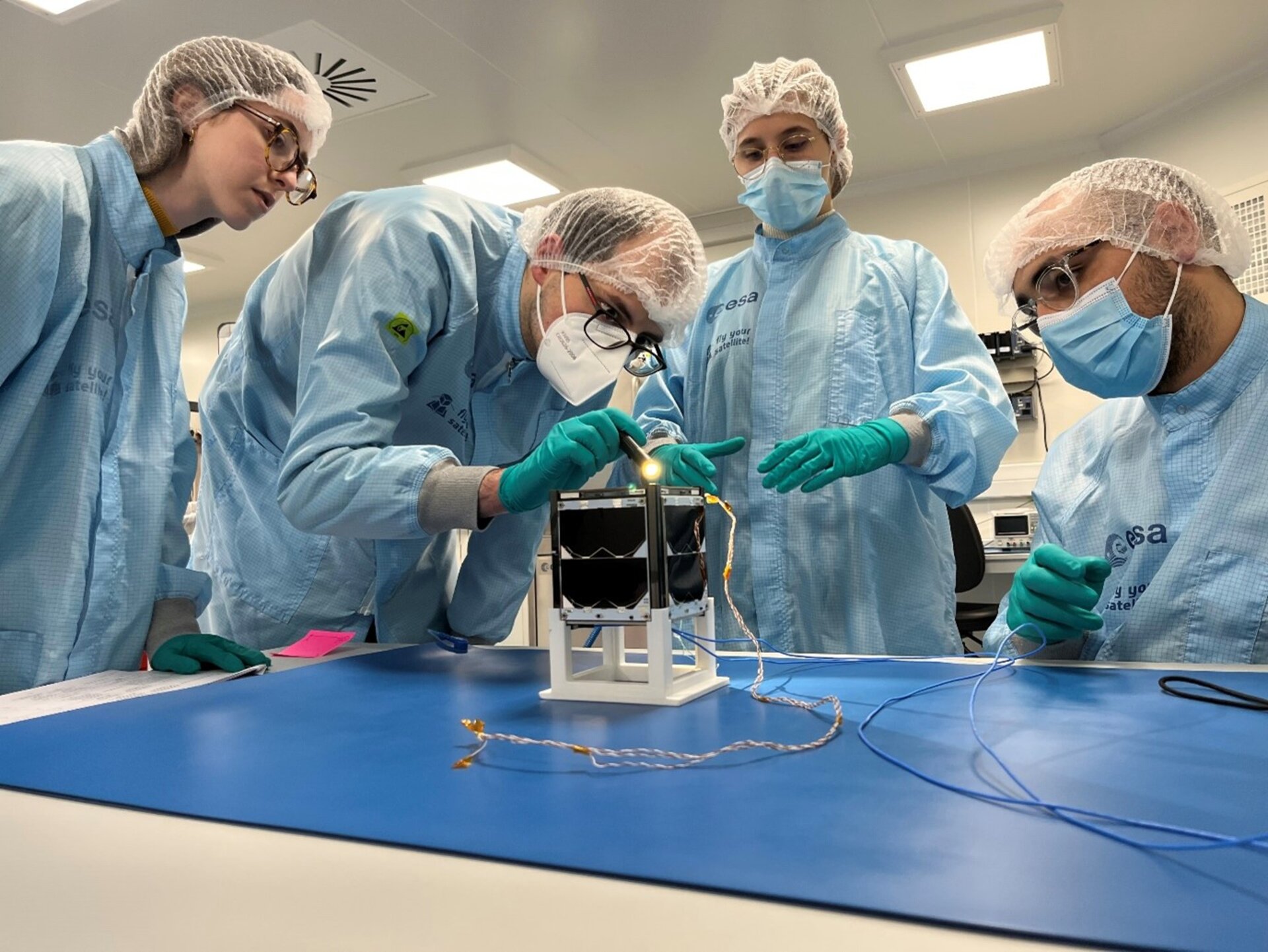CubeSat ISTSat-1 passes the vibration test campaign getting one step closer to space
The first Portuguese CubeSat, ISTsat-1, successfully passed the Environmental Test Campaign within ESA Fly Your Satellite! Programme – getting one step closer to its launch to space. The Team from University of Lisbon flew to the CubeSat Support Facility in ESEC, Belgium, to undergo the vibration tests, the key phase of spacecraft development which simulates the launch.
The CubeSat
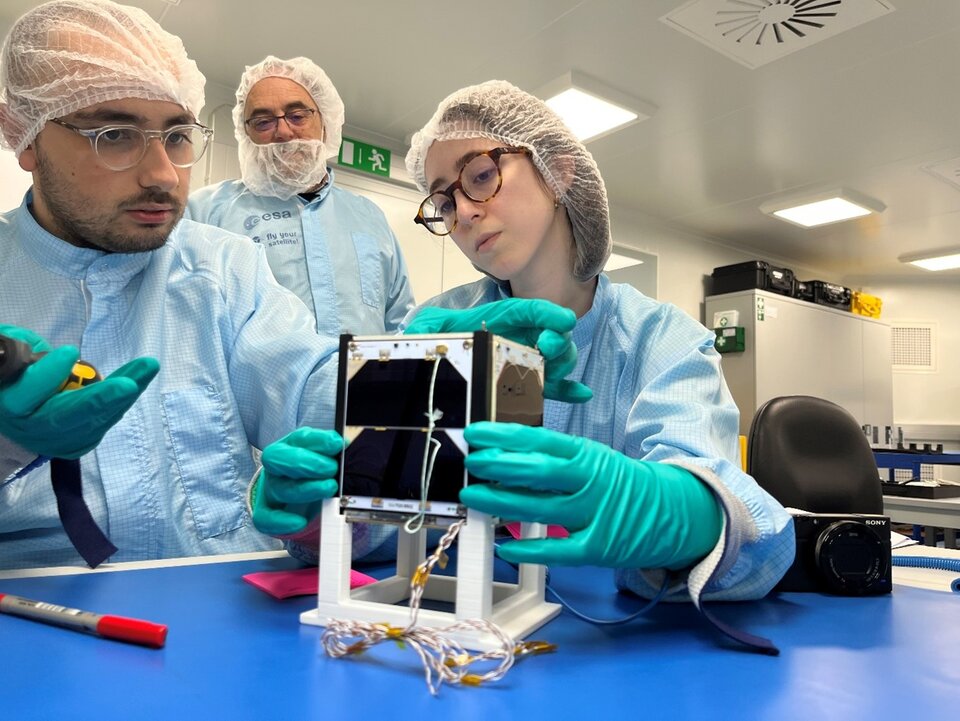
ISTsat-1 is the first-ever nanosatellite designed by students from University of Lisbon’s Instituto Superior Técnico and is part of the second edition of Fly Your Satellite! (FYS), an ESA Education program that gives university students the opportunity to design, build, launch, and operate real satellites.
ISTsat-1 is one-unit (1U, with dimensions of 10x10x10cm) CubeSat developed to optimise and complement aircraft surveillance systems by demonstrating the Automatic Dependent Surveillance-Broadcast (ADS-B) aircraft detection technology in orbit. The small satellite contains many components that have been designed and built by the students themselves including structure, onboard computer, electrical system and battery pack, communication subsystem, and even a bespoke ADS-B antenna and receiver. This has given students a wealth of experience but comes with the inherent additional risks of using in-house solutions. Before ISTSat-1 can undertake this task, it must go through a series of rigorous tests to maximise its ultimate chance of success.
The Test Campaign
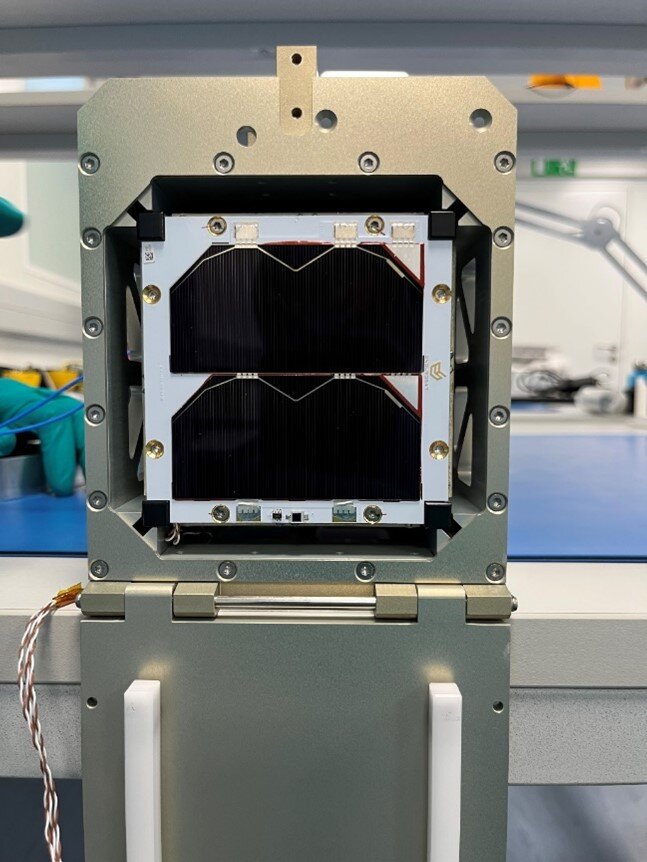
The Environmental/Vibration Test Campaign, which simulates the launch with representative loads, was first attempted in July 2022, but was interrupted due to an anomaly that led to a crack in one of the solar panels. The team carefully assessed and evaluated the problem, fixed the root causes and moved towards the delta vibration test. The students used their proto-flight model for this important step.
From 20 to 24 February 2023 the Team had the chance to travel to the CubeSat Support Facility (CSF) in ESEC, Redu, Belgium to try again. The Team, composed of four students and their endorsing professor, was assisted by the CSF operating staff and the FYS coordinators.
The ISTSat-1 was first unpacked, carefully visually inspected and functionally tested. After test sensors were installed and the CubeSat was placed into the test pod representing the CubeSat deployer, the ISTSat-1 was subjected to two different types of vibration tests to simulate the environment of the rocket and to prove to the launching authority that the CubeSat can withstand such loads. Testing was performed in all three axes of the spacecraft to ensure the structural integrity of the system.
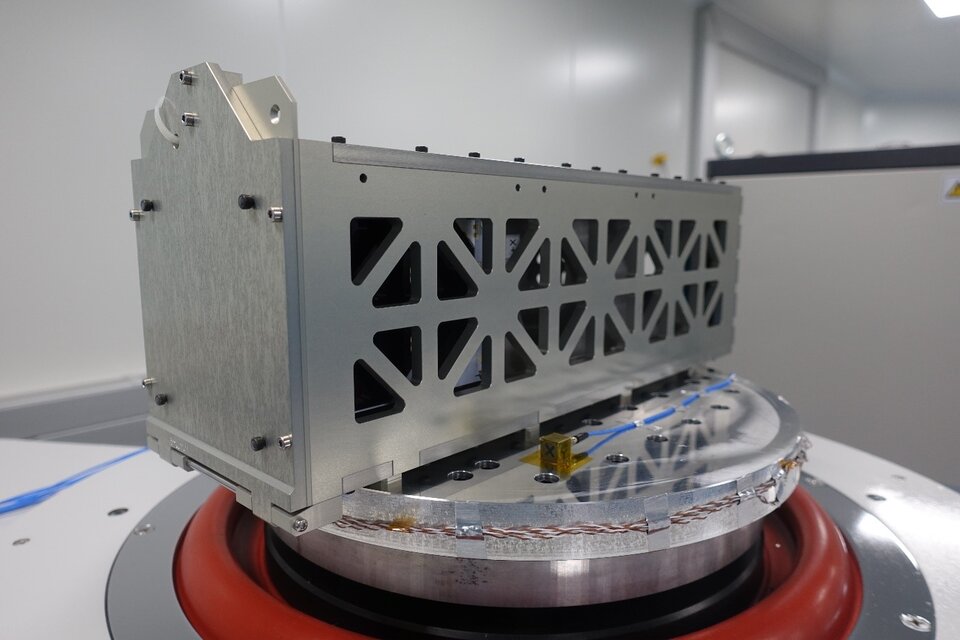
First type of test is called the resonance search test, which aims to find the resonance frequencies of the system and identify its modes. The 20kN shaker available at the CSF is moving its test bed at a certain frequency reaching from 5Hz to 2000Hz. The resonance and the response of the system are sensed by piezo-electric accelerometers installed on the test pod and on the CubeSat.
Second type of test is the random vibration test. The CubeSat is subjected to a harsh random vibration defined by boundaries of frequency and amplitude/power spectral density. After this phase, the team must verify the proper functionality of the CubeSat platform and payload and perform a health check along with functional tests of all the subsystems in a reduced form. Some issues were spotted but eventually fixed while in the laboratory. The campaign was successful granting the ticket to the next phase, the Thermal Vacuum Chamber (TVAC) test campaign which is scheduled for 13 March 2023.
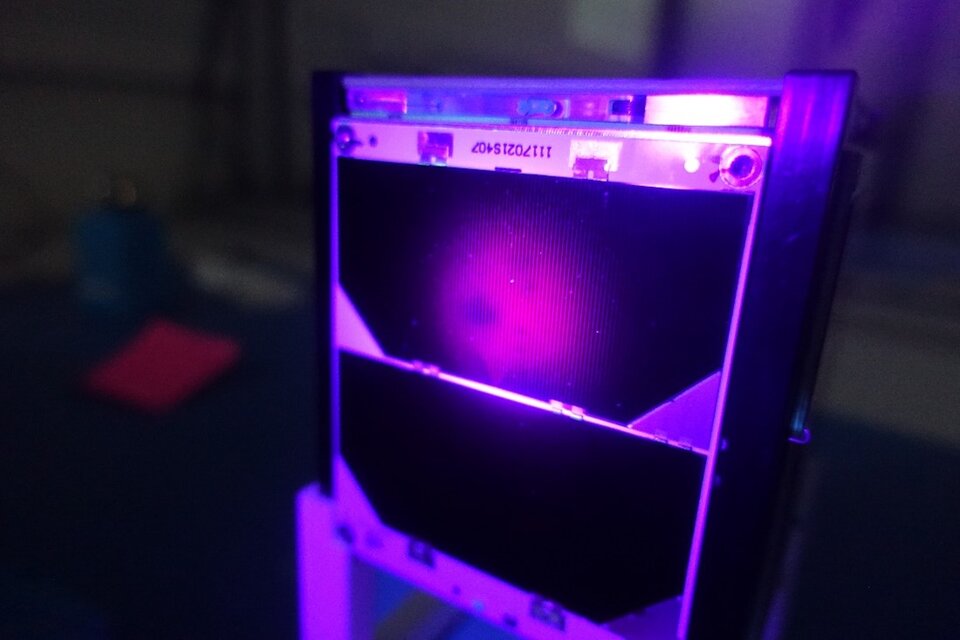
“The vibration test campaign of ISTSat-1 was a successful accomplishment for our project! It was an exciting achievement to obtain the expected vibration results based on the computational analyses I conducted. The entire team gained valuable insights into vibration campaign and testing, making it an enriching experience for everyone involved” said one student enthusiastically.
The CubeSat Support Facility is not only a testing structure, but also a classroom: throughout the week students learned about running a test campaign to professional standards with careful support from ESA Education staff. Ultimately students adjusted admirably to performing lab work and commendably responded to the activities requested by the plan passing a key milestone towards ISTSAt-1 launch!
The Next Steps
The Team is now back at the university to evaluate the test and process the generated results. They will go again to the CSF in Belgium in few weeks to perform two weeks of Thermal Vacuum Testing, and the final steps will include the Full Functional Testing and the final Flight Acceptance Review with ESA board and panel. ISTSat-1 will be launched on board of inaugural flight of the European heaviest rocket Ariane 6.
We wish the Team all the best with the final phases of the project!


